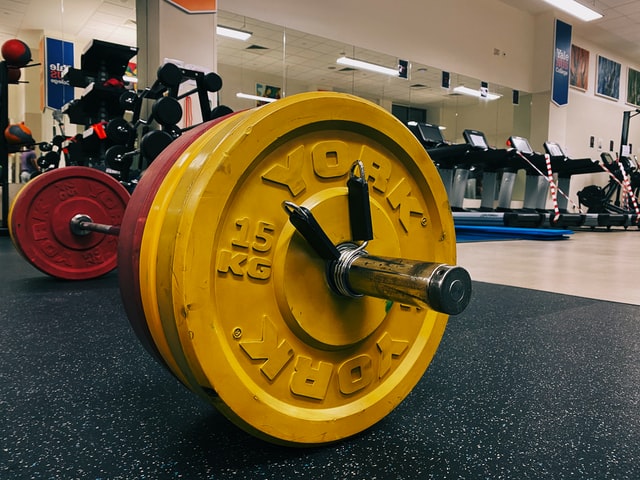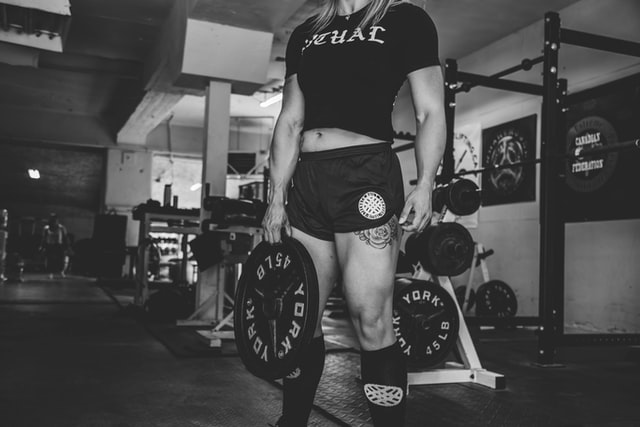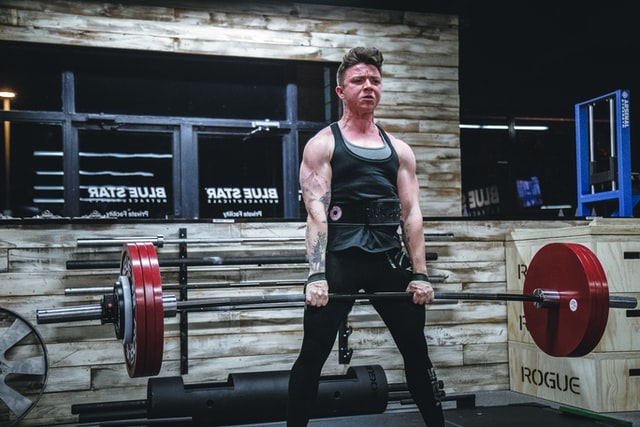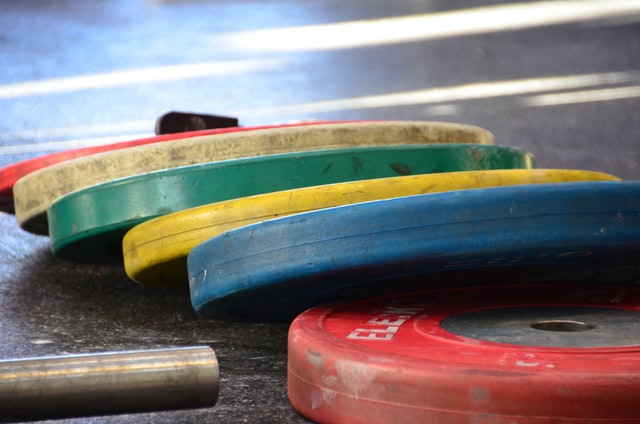Components of training load: volume
Within the components of the training load, the volume represents the amount of work, the amount of training, the number of actions performed…, which is expressed differently depending on the type of training performed. The volume is determined and modified by the duration and frequency of the activity. Basically the volume represents the “time” factor of the magnitude of the stimulus and has little or no meaning if it is not accompanied by the intensity component.
In this series of articles we deal with some of the most important concepts of strength training, collecting notes from the recently published book Strength, Speed and Physical and Sports Performance written by renowned researchers Juan José González Badillo and Juan Ribas Serna.
Summary
- Volume represents the number of repetitions performed in a workout.
- The volume has a limited meaning if it is not accompanied by the intensity with which it has been performed.
- The intensity with which each repetition is executed is the main determinant of the training effect, therefore, the adequate volume should be conditioned by the intensity.
- The best training effect will be achieved when a program is designed with alternating high, medium and light volumes, in the appropriate order and magnitude without exceeding the total volume considered maximum.
When it comes to so-called “strength” training, as well as throwing and jumping, volume is measured by the number of repetitions performed. However, the value of the isolated volume is insufficient to define the load: two volumes can be two totally different workouts if the intensity is different to define the load, it is always necessary to add the corresponding intensity value to the volume value.

When dealing with volume as a component of load, it is important to ask ourselves a key question:
how much volume should be used?
This question does not have a single answer, much less a precise and universal one, but finding or coming close to an answer to this question is a permanent goal for anyone dedicated to training effect programming and analysis.
Some guidelines can be given that should serve as support to justify when the volume reached may be sufficient, but, as we have indicated, the volume has hardly any meaning by itself if it is not going to
together with the intensity factor, and therefore, in many situations, the volume will be determined by intensity indicators such as, especially, the maximum possible speed of execution.
8 Conclusions on the volume effect collected in some investigations
1 – The maximum achievable volume (maximum volume that the subject could do without immediate damage or extreme exhaustion) does not produce the best results (González-Badillo et al., 2005).
2 – A volume of 85% of the maximum achievable allowed to obtain the best results (González-Badillo et al., 2005). With a volume of approximately 65% of the maximum achievable, the same results were obtained as with said maximum and probably the improvement in the exercises with the highest speed of execution are more affected by the size of the volume (González-Badillo et al., 2005). .
3 – Three sets per muscle group per week to failure produce the same or greater effects than 6 and 12 sets (Ostrowski et al., 1997).
4 – The conclusion of some studies and reviews indicate that there is little scientific evidence and there is no physiological theoretical basis to suggest that a greater volume of practice provides a greater increase in strength (Carpinelli and Otto, 1998).
5 – The improvement in athletic performance appears to be related to progression to higher volume with increased strength training experience. (ACSM’s position stand, 2002), but the use of high training loads is not based on the idea that “the more the better” (Viru, 1993), because the key to success does not seem to lie in an extreme volume of training ( Smirnov, 98). For example, doubling the training volume of a group of swimmers for six weeks was found not to result in increased performance (Costill et al. 1991), and the effectiveness of training volume appears to decrease progressively as the athlete’s performance increases. (Matveyer and Gilyasova, 1990).

6 – In order to verify where the optimal training volume could be, 140 studies related to the effect of the number of series performed per exercise were analyzed, 1433 effect size values were calculated to be able to compare the effect of each of the studies, and it was concluded that when more than 3-4 sets per exercise were done, the training effect began to diminish, both in trained and untrained subjects (Rhea et al., 2003). In other words, once a certain volume is reached, increasing it does not seem to produce a greater improvement, and may even reduce performance.
7- In several recent studies it has been observed that losing 10 or 20% of the speed reached in the first repetition in the series produces better results than continuing to do repetitions in the series until losing between 30% or 40-50% of the speed iinitial (Pareja-Blanco et al., 2017; Rodríguez-Rosell et al., 2018; Rodríguez-Rosell et al., 2019). When 10 and 20% of the speed of the first repetition was lost, the volume was 46% and 64% of that performed when 40-50% was lost.
8 – Therefore, studies indicate that there seems to be an optimal zone of amount of training that provides a greater increase in results. However, this optimal zone is poorly defined, and exceeding it can lead to overtraining syndrome. (Lehmann et al. 1993; in Kuipers, 1996). |
Although it is necessary to find the right volume of training, but the questions are numerous:
- How to find the right volume and how to know that it is?
- what is the appropriate volume of a session?
- does it serve us forever?
- Is it the same for all subjects who pursue the same objective in the same specialty?
- What period of time are we referring to when we speak of adequate volume?
These questions do not have and probably will never have a precise and definitive answer, but given the importance of this factor for the best driving in the sporting manner, some practical guidelines can be given that can serve as a reference and support when making decisions. decisions.
How to find the right volume and how to know that it is?
The most appropriate procedure is the use of the experimental method, through which the variables we want to study can be manipulated, which in this case would be using different volume values, and controlling other variables that could influence the results, such as intensity and the type of exercise, mainly.
In this way, the cause-effect relationship between volume and performance could be verified. Given the difficulty involved in carrying out studies of this type, especially with subjects who compete officially, the second alternative is the observation and continuous monitoring of training loads and their effects. This route is more accessible, although less precise, to achieve these objectives.
This observation must focus on the analysis of two main sources of information: physiological sources such as cardiorespiratory, hormonal, enzymatic, metabolic… responses to effort, and mechanical sources, more accessible and probably accurate, such as the evolution of the maximum speed and the loss of speed in the series in each training session.
What is the appropriate volume of a session?
The intensity with which each repetition is executed is the main determinant of the training effect, therefore, the adequate volume should be conditioned by the intensity, understood in this case as execution speed. The most reasonable thing is to think that as long as the intensity can be maintained, the repetition of said intensity – which constitutes the volume – could be positive.
Should all the repetitions that can be done with the planned intensity be exhausted in each session?
This question leads us to a more complex problem, which would focus on determining how many times or how often the maximum possibilities of maintaining the intensity must be exhausted and how many times we must fall below it.
The criterion of The most rational reference to determine the end of the session or of the repetitions or series within an exercise would be the immediate response of the subject from a dynamic point of view, understood as the force lost in the series and, especially its cinematic component understood as the loss of speed in the series. Additionally, the concentration of lactate and ammonium could also be recorded.
The speed losses will indicate the degree of fatigue created in the series or set of series, and the metabolites the degree of metabolic stress caused, in which the main role would be played by ammonia. The loss of speed, and, in part, the ammonium, which is determined precisely by the loss of speed, are quite reliable indicators of the degree and type of effort that the subject is making, so they can allow us to check recurrently the relationship between the degree of effort and the results or effects of training.
In this way, deciding when a session or exercise should be interrupted would not only be determined by intuition, but by data that more accurately reflects the true effort made. “Intuition” is not negligible, and will always accompany the training programmer, applicator, and analyzer, but this “intuition” must ultimately be the product of one’s own experience, which will be more reliable if it is based on the information that is derived from the subject’s mechanical and physiological response to the stimulus that training entails.
Assuming the right volume has been found, does it last forever?
Theoretically, at each moment of sporting life it is supposed that there must be a more adequate volume. In the early years the problem can be reasonably solved if you train with a moderate progression of the load, both in volume and intensity. The more moderate the load, as long as it produces a performance improvement, the more likely the load is appropriate. Dosage problems
of the volume appear when stagnations in the results begin to occur.
Therefore, we can accept that in most cases adequate volume will tend to increase moderately during the first 3-5 years, and from this point on, much more emphasis should be placed on finding out what is the volume that allows a better and greater positive adaptation of the subject to the training loads. In this case, we would be in the situation described in the previous paragraphs, so it should be taken into account
the considerations set forth there.
Also, the focus now needs to be on how many times in a year/season the proper peak volume is reached and how long peak load phases should be maintained. It should be taken into account that The fact that you get an upgrade with a considerable load does not ensure that that is the best load. It is possible that, if the same load is used again, the results are not only not positive, but may even be negative and there is even a risk of injuries directly derived from the demand of the load itself..
Is the adequate volume the same for all the subjects who seek the same objective in the same specialty?
Experience indicates that the answer to this question is clearly negative. Not all subjects are capable of supporting the same loads.
What is the reference time period for an adequate volume?
The concept of adequate volume can be applied to any unit of training, from the volume of a series to that of a year. In order to adequately organize the training, it would be convenient for us to have a valid reference on what is the maximum-adequate volume of a session, a week, a month (four weeks) and a complete training cycle (6-12 weeks).
The best effect will be achieved when a program is designed with correct dynamics (alternation of medium and light high volumes in the appropriate order and magnitude), without exceeding the total volume considered as the maximum achievable in each training unit and for the appropriate time. .



















